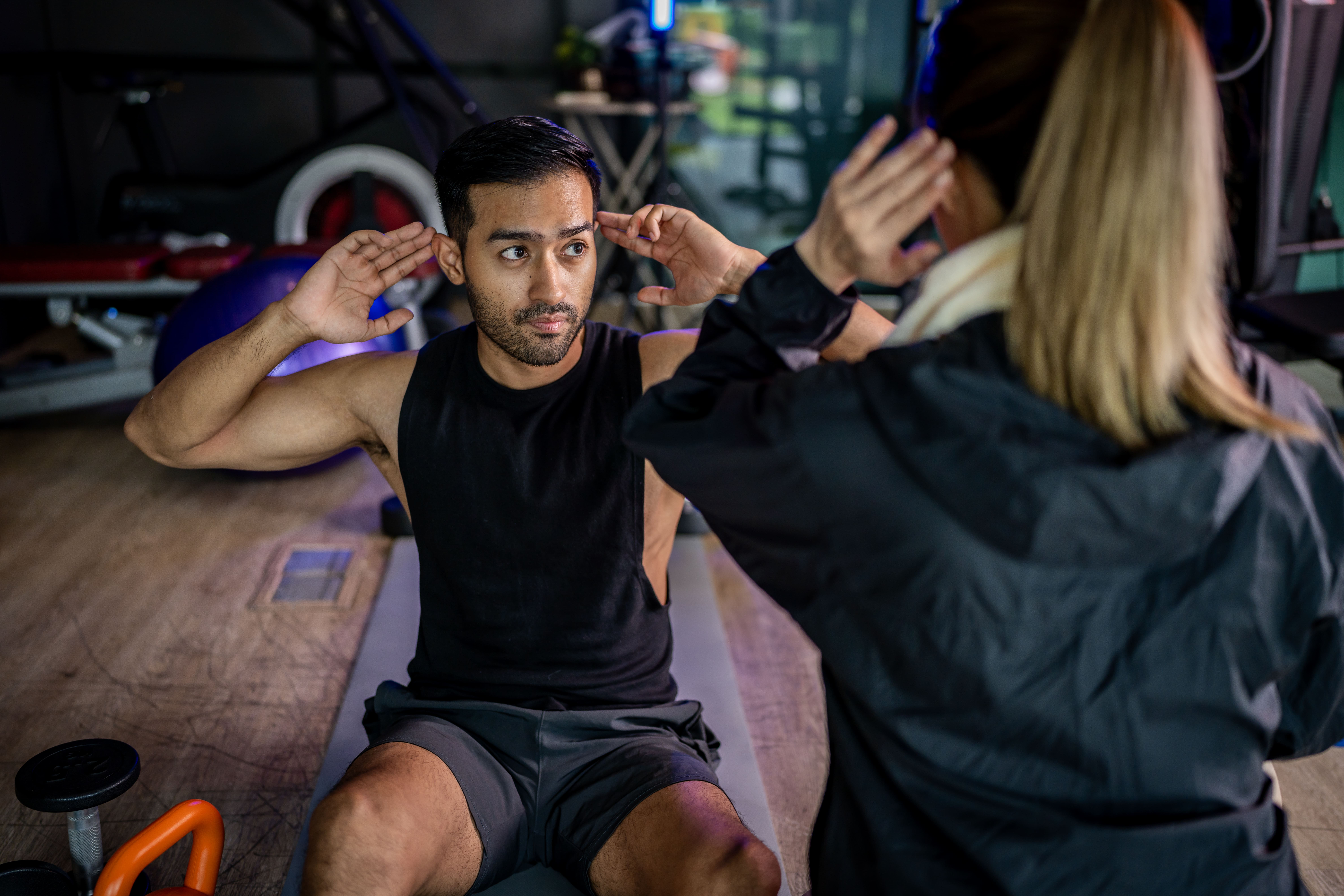
Discover the benefits of chiropractic care for low back pain as a safe and effective approach to managing and alleviating back pain.
Table of Contents
Understanding and Managing Low Back Pain: The Role of Chiropractic Care
Introduction
Low back pain is a widespread issue that affects millions globally, costing billions in healthcare and lost productivity. Whether it’s a sharp twinge from lifting something heavy or a dull ache from sitting too long, low back pain can turn daily life into a grim comedy of creaks and groans. Fortunately, chiropractic care offers a promising, non-invasive solution. This blog post examines the clinical rationale behind chiropractic care for low back pain, the anatomy of the lumbar spine, environmental factors that contribute to pain, and the expertise of Dr. Alexander Jimenez, a distinguished chiropractor in El Paso, TX, with a particular focus on personal injury cases. With a touch of dark humor to lighten the mood, we’ll guide you through understanding and managing this common condition.
What is Low Back Pain?
Low back pain is discomfort in the lower back, between the bottom of the ribs and the top of the legs. It’s like your spine staging a protest against modern life’s demands—sitting at desks, slouching on couches, or pretending to be a weightlifting champion. It can be classified as:
- Acute: Lasts less than 6 weeks, often from sudden injuries like muscle strains.
- Subacute: Persists for 6-12 weeks.
- Chronic: Lingers beyond 12 weeks, sometimes due to ongoing issues like disc degeneration.
Common Causes and Risk Factors
Low back pain can stem from various sources, including:
- Muscle or ligament strains: Overuse or sudden movements can strain soft tissues.
- Disc herniation: When the disc’s inner material bulges, pressing on nerves.
- Spinal stenosis: Narrowing of the spinal canal, compressing nerves.
- Osteoarthritis: Degeneration of spinal joints.
Risk factors include age, obesity, sedentary lifestyle, poor posture, and occupational hazards such as heavy lifting. Imagine your spine as a grumpy old bridge—neglect it, and it begins to crumble under pressure (Hoy et al., 2012).
Impact on Daily Life
Low back pain can make simple tasks feel like Herculean trials. Sitting through a meeting, bending to tie shoes, or even walking the dog can become painful ordeals. Chronic pain may lead to disability, reduced work productivity, and a lower quality of life, turning you into a reluctant star in your tragic sitcom (Von Korff, 1994).
References
Hoy, D., Bain, C., Williams, G., March, L., Brooks, P., Blyth, F., Woolf, A., Vos, T., & Buchbinder, R. (2012). A systematic review of the global prevalence of low back pain. Arthritis & Rheumatism, 64(6), 2028–2037. pubmed.ncbi.nlm.nih.gov/22231424/
Von Korff, M. (1994). Studying the natural history of back pain. Spine, 19(18 Suppl), 2041S–2046S. pubmed.ncbi.nlm.nih.gov/7801181/
Anatomy of the Lumbar Spine
The lumbar spine, your lower back’s structural backbone, consists of five vertebrae (L1-L5), intervertebral discs, facet joints, ligaments, and muscles. Think of it as the body’s suspension system, designed to bear weight and allow movement but prone to breakdowns if not maintained.
Structure and Function
- Vertebrae: These bones stack to form the spinal column, supporting the upper body.
- Intervertebral Discs: They act as shock absorbers between vertebrae, but can herniate, causing pain similar to a tire blowing out on a bumpy road.
- Facet Joints: Allow flexibility for bending and twisting.
- Ligaments and Muscles: Provide stability and movement, but strains can lead to pain.
The lumbar spine’s primary role is to support the thorax and upper limbs, transmitting loads to the pelvis. Dysfunction, like disc degeneration or joint misalignment, can trigger pain by irritating nerves or straining muscles (Bogduk & Twomey, 2012).
How Dysfunction Leads to Pain
When the lumbar spine’s components are misaligned or damaged, it’s like a poorly tuned orchestra—everything goes off-key. A disc herniation can compress nerves, causing radiating pain. Muscle imbalances from poor posture can strain ligaments, and facet joint issues can limit mobility, making every move a reminder of your spine’s discontent.
References
Bogduk, N., & Twomey, L. T. (2012). Clinical and radiological anatomy of the lumbar spine (5th ed.). Churchill Livingstone.
Environmental Factors and Low Back Pain
Your environment can be a silent saboteur of your spine. Sitting for hours at a desk, slouched like a question mark, or lifting heavy boxes without proper form can turn your lower back into a battleground.
Prolonged Sitting and Sedentary Behavior
Research suggests that prolonged sitting, particularly with a static posture, is associated with chronic low back pain. A study of office workers found that 75% reported back pain, with those experiencing chronic pain showing more static sitting behavior (Bontrup et al., 2019). It’s as if your spine is saying, “Get up, or I’ll make you regret it!”
Other Contributing Factors
- Poor Posture: Slumping increases spinal stress, like piling extra weight on an already creaky bridge.
- Repetitive Movements: Repeated bending or lifting can strain muscles and discs.
- Ergonomic Issues: Poorly designed workstations exacerbate spinal strain.
Chiropractors can address these by recommending ergonomic adjustments and exercises to counteract sedentary habits, helping your spine stage a comeback.
References
Bontrup, C., Taylor, W. R., Fliesser, M., Visscher, R., Green, T., Wippert, P. M., & Zemp, R. (2019). Low Back Pain and Its Relationship with Sitting Behavior among Sedentary Office Workers. Applied Ergonomics, 81, 102894. pubmed.ncbi.nlm.nih.gov/31422243/
The Chiropractic Approach for Pain Relief- Video
Chiropractic Care for Low Back Pain
Chiropractic care is like a tune-up for your spine, utilizing hands-on techniques to restore proper alignment and alleviate pain. It’s a non-invasive approach that avoids the need for pills or scalpels, offering relief for those who’d rather not play pharmaceutical roulette.
What is Chiropractic Care?
Chiropractors use spinal manipulation—quick, controlled thrusts to specific joints—to improve mobility and reduce pain. They also employ soft tissue therapy, exercise prescriptions, and ergonomic advice. The goal is to realign the spine, reduce nerve irritation, and restore function, like fixing a misaligned wheel to stop the car from veering.
Mechanisms of Action
Spinal manipulation may:
- Improve Joint Mobility: Corrects misalignments, allowing smoother movement.
- Reduce Nerve Irritation: Relieves pressure on nerves, easing pain signals.
- Relax Muscles: Decreases tension to improve comfort.
Research supports chiropractic care’s effectiveness. A clinical practice guideline states that chiropractors are well-suited to diagnose and treat low back pain, with spinal manipulation showing benefits for both acute and chronic cases (Globe et al., 2016).
Evidence of Effectiveness
Studies suggest chiropractic care can reduce pain and improve function. A 2018 trial found that military personnel receiving chiropractic care in addition to usual care reported less pain and disability compared to those receiving usual care alone (Goertz et al., 2018). However, some debate exists, as evidence for long-term benefits is less robust, and outcomes vary by patient.
References
Globe, G., Farabaugh, R. J., Hawk, C., Morris, C. E., Baker, G., Whalen, W. M., … & Augat, T. (2016). Clinical practice guideline: Chiropractic care for low back pain. Journal of Manipulative and Physiological Therapeutics, 39(1), 1–22. pubmed.ncbi.nlm.nih.gov/26804581/
Goertz, C. M., Long, C. R., Vining, R. D., Pohlman, K. A., Walter, J., & Coulter, I. (2018). Effect of Usual Medical Care with vs. Without Chiropractic Care on Low Back Pain and Disability. JAMA Network Open, 1(1), e180105. jamanetwork.com/journals/jamanetworkopen/fullarticle/2680417
Therapeutic Techniques in Chiropractic Care
Chiropractors employ a range of techniques to address low back pain, each designed to tackle specific issues. It’s like having a Swiss Army knife for your spine—versatile and precise.
Key Techniques
- Spinal Manipulation: High-velocity, low-amplitude thrusts to restore joint function. Think of it as giving your spine a gentle nudge to get back in line.
- Mobilization: Low-velocity movements to increase range of motion, ideal for those who prefer a softer touch.
- Soft Tissue Therapy: Massage or myofascial release to relax tight muscles, like kneading dough to make it pliable.
- Exercise Prescription: Core-strengthening and stretching exercises to support the spine.
- Ergonomic Advice: Guidance on posture and workstation setup to prevent further strain.
These techniques address pain by improving spinal mechanics and reducing stress on affected structures, helping you move without wincing (Shen et al., 2006).
References
Shen, F. H., Samartzis, D., & Andersson, G. B. (2006). Nonsurgical management of acute and chronic low back pain. Journal of the American Academy of Orthopaedic Surgeons, 14(8), 477–487. pubmed.ncbi.nlm.nih.gov/16885479/
Dr. Alexander Jimenez: Expert in Low Back Pain Management
In El Paso, TX, Dr. Alexander Jimenez stands out as a beacon of hope for those battling low back pain. With over 25 years of experience as a chiropractor and nurse practitioner, his dual expertise allows for a comprehensive approach that’s like having a spine whisperer and a medical detective in one.
Qualifications and Approach
Dr. Jimenez, DC, APRN, FNP-BC, combines chiropractic techniques with advanced diagnostic skills to provide comprehensive care. He utilizes imaging techniques such as X-rays and MRIs to pinpoint the root causes of pain, ensuring that treatments are tailored to each patient. His integrative approach combines spinal adjustments with functional medicine, addressing not only symptoms but also overall health (healthcoach.clinic/).
Specialization in Personal Injury Cases
Dr. Jimenez excels in treating victims of personal injuries, including those resulting from car accidents or workplace incidents. His use of advanced diagnostics and dual-scope procedures ensures accurate assessments, crucial for legal documentation. He serves as a liaison between medical care and legal needs, providing detailed reports that support injury claims, and is a trusted figure in El Paso’s personal injury community (www.linkedin.com/in/dralexjimenez/).
Patient-Centered Care
His practice, Injury Medical & Chiropractic Clinic, focuses on restoring mobility and promoting overall wellness. Patients praise his ability to clearly explain conditions and provide effective, non-invasive treatments, helping them return to their daily lives without the shadow of pain.
References
Jiménez, A. (n.d.). Injury Medical & Chiropractic Clinic. Retrieved from healthcoach.clinic/
Jiménez, A. (n.d.). LinkedIn profile. Retrieved from www.linkedin.com/in/dralexjimenez/
Managing Low Back Pain at Home
While chiropractic care is a powerful tool, you can also take steps at home to manage low back pain. It’s like giving your spine a little TLC between professional visits, ensuring it doesn’t stage a full-blown rebellion.
Home Management Tips
- Ice or Heat: Apply ice for the first 48 hours to reduce inflammation, then switch to heat to relax muscles. It’s like soothing your spine with a cold drink or a warm bath.
- Stay Active: Avoid bed rest; gentle activities like walking keep your spine from stiffening up.
- Core Strengthening: Exercises like planks strengthen the muscles that support your back.
- Stretching: Regular stretches, like yoga, improve flexibility and reduce tension.
- Posture: Sit and stand tall to avoid slouching, which can stress your spine.
- Ergonomics: Adjust your workstation to support your lower back, ensuring your chair isn’t your spine’s worst enemy.
These strategies complement chiropractic care, enhancing recovery and preventing recurrence (Personal Injury Doctor Group, 2017).
References
Personal Injury Doctor Group. (2017, March 22). Manage low back pain at home. Retrieved from personalinjurydoctorgroup.com/2017/03/22/manage-low-back-pain-at-home/
Conclusion
Low back pain is a common yet complex condition that can disrupt daily life, but chiropractic care offers a promising path to relief. By addressing spinal misalignments and environmental factors such as prolonged sitting, chiropractors help restore function and alleviate pain. Dr. Alexander Jimenez’s expertise in El Paso, particularly for personal injury cases, highlights the value of integrative care. If pain persists, consult a healthcare professional for personalized treatment. Disclaimer: This post is for informational purposes only and not a substitute for professional medical advice. Always consult a qualified healthcare provider for diagnosis and treatment.
Additional References
Haldeman, S., & Dagenais, S. (2008). Management of Chronic Low Back Pain in Active Individuals. The Spine Journal, 8(1), 142–149. pubmed.ncbi.nlm.nih.gov/18191358/
van Middelkoop, M., Rubinstein, S. M., Kuijpers, T., Verhagen, A. P., Ostelo, R., Koes, B. W., & van Tulder, M. W. (2010). Effective physical treatment for chronic low back pain. Best Practice & Research Clinical Rheumatology, 24(2), 193–204. pubmed.ncbi.nlm.nih.gov/20227641/
Cao, P., Jiang, L., Zhuang, C., Yang, Y., Zhang, Z., Chen, W., & Zheng, T. (2011). Management of degenerative disk disease and chronic low back pain. The Spine Journal, 11(2), 100–106. pubmed.ncbi.nlm.nih.gov/20850390/
Disclaimers
Professional Scope of Practice *
The information herein on "Chiropractic Care: A Complete Guide for Low Back Pain" is not intended to replace a one-on-one relationship with a qualified health care professional or licensed physician and is not medical advice. We encourage you to make healthcare decisions based on your research and partnership with a qualified healthcare professional.
Blog Information & Scope Discussions
Welcome to El Paso's wellness blog, where Dr. Alex Jimenez, DC, FNP-C, a board-certified Family Practice Nurse Practitioner (FNP-C) and Chiropractor (DC), presents insights on how our team is dedicated to holistic healing and personalized care. Our practice aligns with evidence-based treatment protocols inspired by integrative medicine principles, similar to those found on dralexjimenez.com, focusing on restoring health naturally for patients of all ages.
Our areas of chiropractic practice include Wellness & Nutrition, Chronic Pain, Personal Injury, Auto Accident Care, Work Injuries, Back Injury, Low Back Pain, Neck Pain, Migraine Headaches, Sports Injuries, Severe Sciatica, Scoliosis, Complex Herniated Discs, Fibromyalgia, Chronic Pain, Complex Injuries, Stress Management, Functional Medicine Treatments, and in-scope care protocols.
Our information scope is limited to chiropractic, musculoskeletal, physical medicine, wellness, contributing etiological viscerosomatic disturbances within clinical presentations, associated somato-visceral reflex clinical dynamics, subluxation complexes, sensitive health issues, and functional medicine articles, topics, and discussions.
We provide and present clinical collaboration with specialists from various disciplines. Each specialist is governed by their professional scope of practice and their jurisdiction of licensure. We use functional health & wellness protocols to treat and support care for the injuries or disorders of the musculoskeletal system.
Our videos, posts, topics, subjects, and insights cover clinical matters, issues, and topics that relate to and directly or indirectly support our clinical scope of practice.*
Our office has reasonably attempted to provide supportive citations and has identified the relevant research studies or studies supporting our posts. We provide copies of supporting research studies available to regulatory boards and the public upon request.
We understand that we cover matters that require an additional explanation of how they may assist in a particular care plan or treatment protocol; therefore, to discuss the subject matter above further, please feel free to ask Dr. Alex Jimenez, DC, APRN, FNP-BC, or contact us at 915-850-0900.
We are here to help you and your family.
Blessings
Dr. Alex Jimenez DC, MSACP, APRN, FNP-BC*, CCST, IFMCP, CFMP, ATN
email: coach@elpasofunctionalmedicine.com
Licensed as a Doctor of Chiropractic (DC) in Texas & New Mexico*
Texas DC License # TX5807
New Mexico DC License # NM-DC2182
Licensed as a Registered Nurse (RN*) in Texas & Multistate
Texas RN License # 1191402
ANCC FNP-BC: Board Certified Nurse Practitioner*
Compact Status: Multi-State License: Authorized to Practice in 40 States*
Graduate with Honors: ICHS: MSN-FNP (Family Nurse Practitioner Program)
Degree Granted. Master's in Family Practice MSN Diploma (Cum Laude)
Dr. Alex Jimenez, DC, APRN, FNP-BC*, CFMP, IFMCP, ATN, CCST
My Digital Business Card






